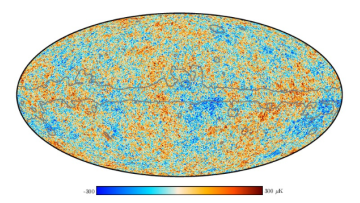15:45
Trying to understand mapping class groups of algebraic surfaces from the Thurstonian point of view
Abstract
In some ways the theory of mapping class groups of 4-manifolds is in 2020 at the same place where the theory of mapping class groups of 2-manifolds was in 1973, before Thurston changed everything. In this talk I will describe some first steps in an ongoing joint project with Eduard Looijenga where we are trying to understand mapping class groups of certain algebraic surfaces (e.g. rational elliptic surfaces, and also K3 surfaces) from the Thurstonian point of view.
North Meets South
Abstract
Paolo Aceto
Knot concordance and homology cobordisms of 3-manifolds
We introduce the notion of knot concordance for knots in the 3-sphere and discuss some key problems regarding the smooth concordance group. After defining homology cobordisms of 3-manifolds we introduce the integral and rational homology cobordism groups and briefly discuss their relationship with the concordance group. We conclude stating a few recent results and open questions on the structure of these groups.
North Meets South
Abstract
The classical Riemann-Hilbert correspondence is an elegant statement linking geometry (via flat connections) and topology (via local systems). However, when one allows the connections to have even simple singularities, the naive correspondence breaks down. We will outline some work on understanding this "logarithmic" setting.
Oxford Mathematicians Dmitry Belyaev and Michael McAuley explain the ubiquitous role of Gaussian Fields in modelling spatial phenomena across science, and especially in cosmology. This case-study is based on work with Stephen Muirhead at Queen Mary University of London (QMUL).
14:15
Some constructions of Calabi--Yau threefolds and real Lagrangian submanifolds
Abstract
I will describe the results of two projects on the construction of Calabi-Yau threefolds and certain real Lagrangian submanifolds. The first concerns the construction of a novel dataset of Calabi-Yau threefolds via an application of the Gross-Siebert algorithm to a reducible union of toric varieties obtained by degenerating anti-canonical hypersurfaces in a class of (around 1.5 million) Gorenstein toric Fano fourfolds. Many of these constructions correspond to smoothing such a hypersurface; in contrast to the famous construction of Batyrev-Borisov which exploits crepant resolutions of such hypersurfaces. A central ingredient here is the construction of a certain 'integral affine structure with singularities' on the boundary of a class of polytopes from which one can form a topological model, due to Gross, of the corresponding Calabi-Yau threefold X. In general, such topological models carry a canonical (anti-symplectic) involution i and in the second project, which is joint work with H. Argüz, we describe the fixed point locus of this involution. In particular, we prove that the map i*-1 on graded pieces of a Leray filtration of H^3(X,Z2) can be identified with the map D -> D^2, where D is an element of H^2(X',Z2) and X' is mirror-dual to X. We use this to compute the Z2 cohomology group of the fixed locus, answering a question of Castaño-Bernard--Matessi.


